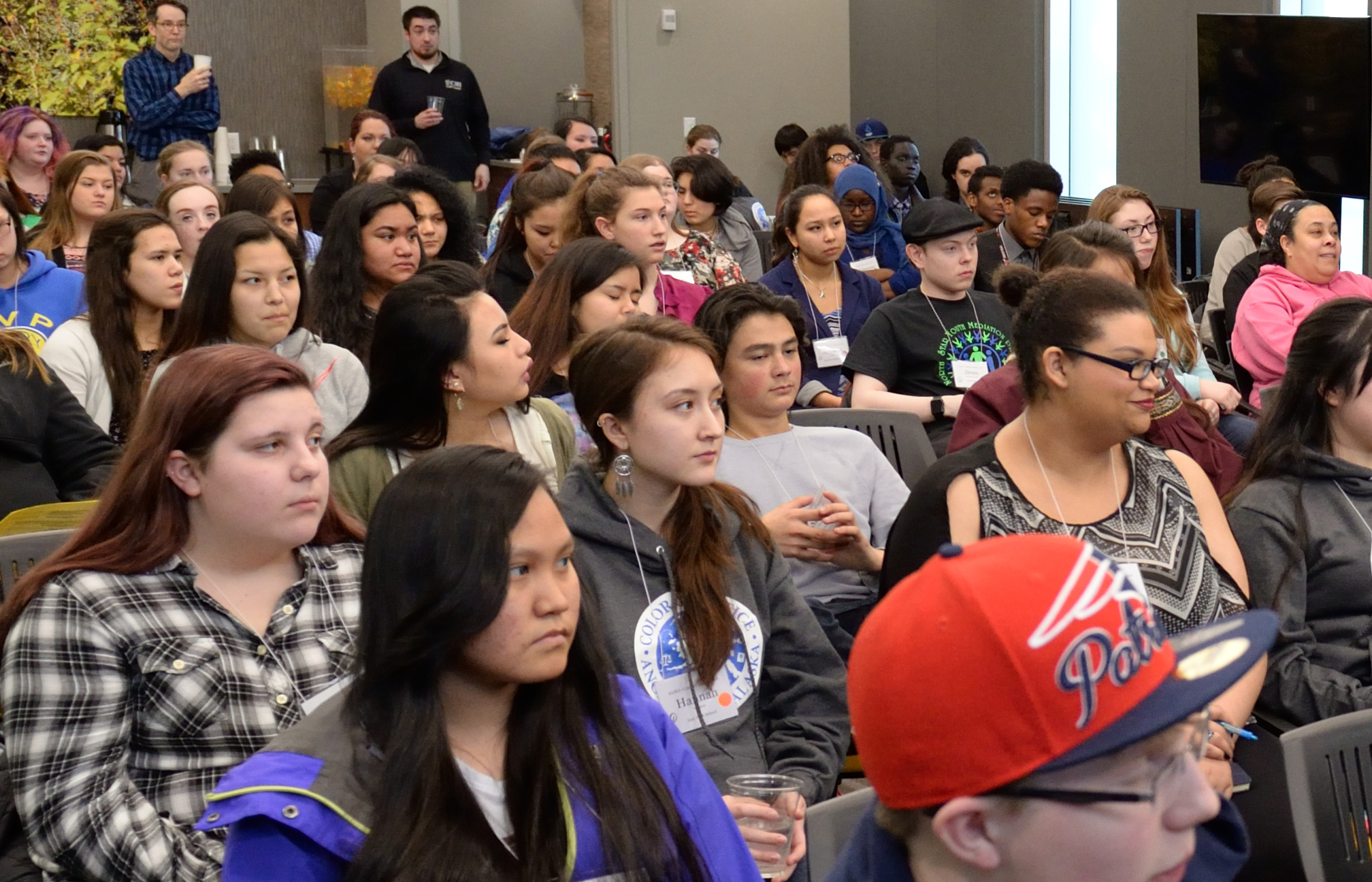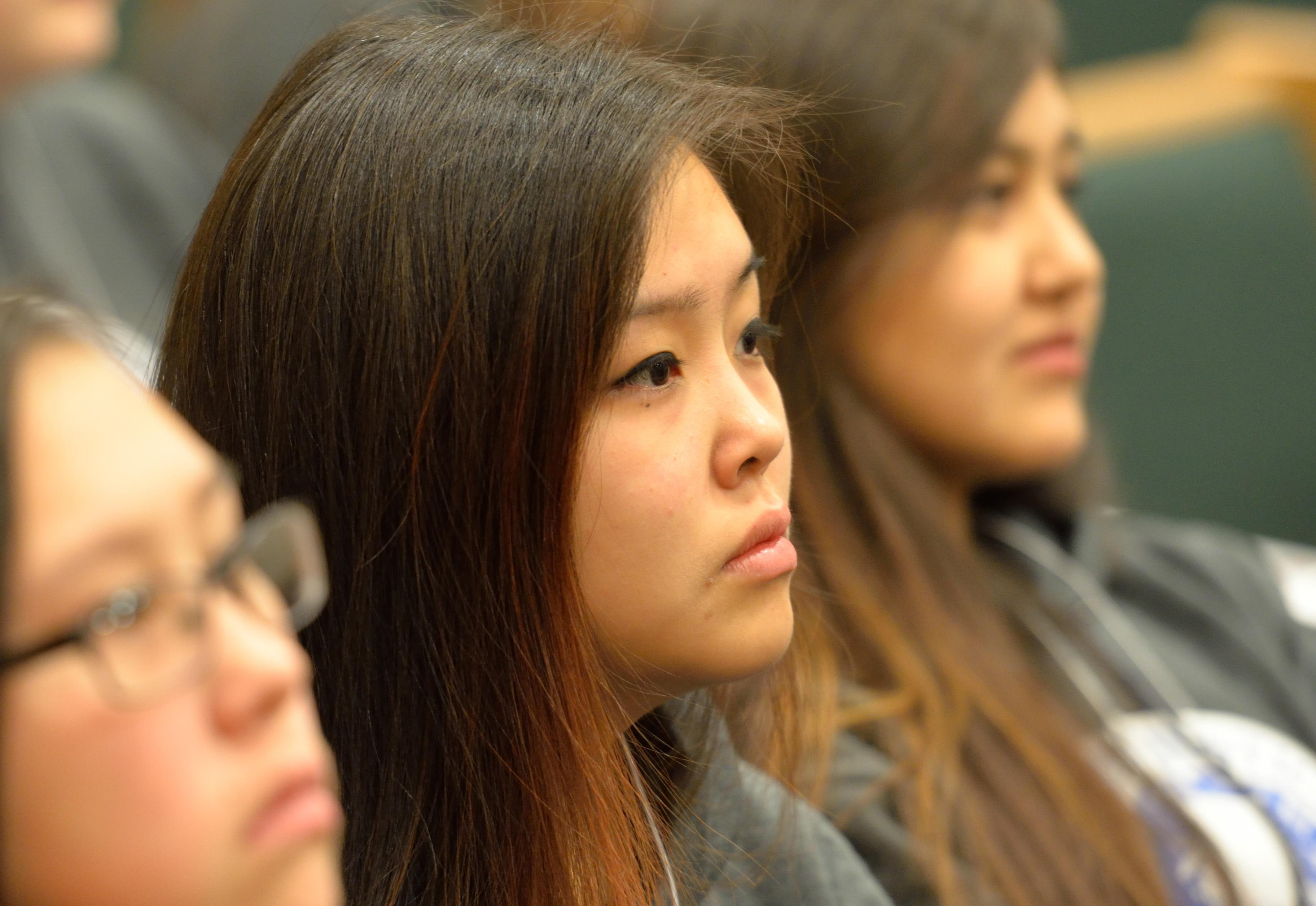
When the distinguished judges and legal professionals addressed the students at the Color of Justice program, they saw something big staring back at them: Alaska. All of Alaska. From the North Slope to the Aleutians Islands. Forty students had flown in from all parts of rural Alaska, and in large measure, CIRI is the reason they were able to attend.
Color of Justice is a program aimed at getting women and ethnic minority students interested in the legal profession. The program alternates annually between Anchorage and the Mt. Edgecumbe High School in Sitka. CIRI General Counsel Bruce Anders has been part of the Anchorage-based program for the past couple of years and he noticed that very few, if any, Alaska Native students participated. He set out to change that.
“Alaska Native people make up about 14 percent of the Alaska population,” Anders said. “There is no reason they shouldn’t be at least equally represented in the legal profession—in the bar and on the bench.”

Creating the “Color of Justice Rural Student Initiative” was no small undertaking. First, Anders contacted the 11 other Alaska Native regional corporations and helped convince them to contribute money to cover the airfare for students to travel to Anchorage. Then, with legal professionals and nonprofit organizations including the Alaska Native Justice Center, Anders and CIRI’s Corporate Communications Department helped devise an outreach video, application process and selection committee. In the span of about a month, the 40 students were selected.
“This was an amazing and unprecedented effort from so many people,” said Anders. “From the CIRI staff who helped organize the logistics and flights for the kids, to the enthusiastic participation of the other Alaska Native corporations and the legal professionals who embraced participation of rural students, this effort turned heads around the state and made history.”
The rural students accepted into Color of Justice spent two days learning about the legal system and its many applications, and meeting with lawyers and judges, including former Chief Justice of the Alaska Supreme Court Dana Fabe. The kids also worked together to solve “You be the Judge” problems based upon actual laws and court cases, competed in a trivia contest about the U.S. and Alaska Constitutions, and wrapped up the program with a mock trial, in which each student was assigned a role in a made-up criminal prosecution.
One of the students selected this year was Ruby Willoya-Williams, a junior at Kenai Alternative High School and a member of the Kenaitze Indian Tribe. “A couple of judges had some pretty inspiring stories that I did not expect from them, like how they came to be a judge and how they went through it.” Willoya-Williams said. “It was really awesome to hear their stories.”
Some students were not ready to commit to a legal career, but they arrived with an open mind and were ready to learn.

“I’m not quite sure what I’m going to be doing when I’m older so I’m kind of exploring options,” said sophomore Connor McManus from Akutan, an island in the Aleutians that doesn’t even have an airstrip. Fellow Akutan student Nikita Shangin described the journey they had been on just to get to Anchorage, “From Akutan to Aklun (a neighboring island with an airstrip) we took a helicopter and from Akun to Dutch (Harbor) we took a Navajo (twin-engine plane). We stayed in Dutch for two days because the weather was bad, like wind and rain, then finally got out to Anchorage.”
Talk about motivation to learn about the law!
A survey of the students who attended found the program to be popular and informative. The survey showed a 40-percent increase in the number of students who were interested in a law career after attending Color of Justice.
Former Chief Justice of the Supreme Court Dana Fabe said this year’s program was one of the most successful Color of Justice events held in Alaska, largely because of the participation of students from across the rural areas of the state.

“Thank you so much Bruce (Anders) for making this the best Color of Justice program we have ever held in all the years I have been involved due to your rural student initiative and for the tremendous support of CIRI and all of the Regional Corporations!” Justice Fabe said in a note to organizers.
Anders left the event having met a bright group of potential future legal colleagues. He committed to monitor and assist the rural students he came to know as they pursue dreams to become lawyers. Some students’ parents wrote Anders afterward, describing how their children had changed, deciding that they were now on a road to higher education and law school. “While it was sad saying goodbye to these kids and telling them how proud I was of them, I felt huge pride that CIRI and Color of Justice made a real difference in these students’ lives.”



